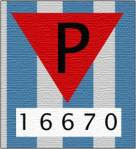I got my first pelt ever tonight in the QRP Foxhunt, WOOT, WOOT, WOOT!
I worked Paul AA4XX at 0229 Zulu, less than a minute before the contest ended! I called the other fox, Al K2ZN for fifteen minutes or more, but I could not work him, even though he had a very nice signal into Kansas. Paul's signal was much weaker, but clear enough and I snagged my pelt from him. I'm a very happy camper tonight! I must send out a big thank you to Paul for slowing down for this slow-coder!
Let's see, Wichita, Ks to Raleigh, NC is 1270 miles and I was using a full QRP gallon at 5watts, so that is 254miles to the watt. Not really impressive by QRP standards. I am going to set a goal tonight of working at least 1000 miles on a single watt. That will be a big challenge, by golly!
I realized after my earlier post today, that I did just what Kenwood did, assume you know everything that I'm talking about. If you are not familiar with the hobby, or if you are a beginner, I should explain some of the terms. If you're an experienced Ham, you already know this stuff.
RIT is Receiver Incremental Tuner. This feature allows you to listen on one frequency while broadcasting on another. This is called working "Split".
SPLIT - When a station is planning on having a large number of people calling them, this is called a pile-up, they will broadcast on one channel, but listen on another channel and the people calling will be an mirror image to the main station, calling and listening on opposite frequencies. Why work Split? It facilitates the exchange of information as, theoretically, only the main station is talking on the one frequency and the calling stations are talking on the other. This allows the calling stations to hear the main station without interference from other stations that are calling.
QRP - Originally this meant "reduce your power" or "Should I reduce my power", but its most common usage today is to identify a station that is low power. A full QRP gallon, i.e. the maximum wattage broadcasted and still considered to a QRP station, is 5 Watts. Hams have the legal priviledge of using up to 1500 watts, at least on most bands. 1500 watts is a full QRO (High Power) gallon. Within Ham radio there are many sub-hobbies, or niches. Some people only want to look for foreign stations, others use satellites to communicate, I like working special event station, and so forth. QRP operators use low power equipment, usually small and light, and rely on technique, experience, and skill to make contacts.
QRP Fox Hunt - A contest where two stations, and they could be anywhere in the US, and I suppose Canada, act as foxes. They send out a broadcast and the other people are looking for them, called hounds. When a fox hears a hound calling him they will make contact and exchange information. The hound is said to have taken a "pelt". None of the stations can broadcast more than 5 watts of power. This is challenging, but it makes you a better operator.
Subscribe to:
Post Comments (Atom)





No comments:
Post a Comment